Hydroponic systems are super famous for producing almost double the amount of yield produced by normal soil farms. But, hydroponics also is very known for its high startup and operational costs, which made some growers question their profitability.
So can hydroponics be profitable? Yes, hydroponics can be very profitable for their growers. According to research done by the University of Florida, an average acre of hydroponics can earn between 200k $ and 250k $ annually. If operational costs are managed wisely, farmers can generate lucrative profits.

However, hydroponic farms’ profitability will hugely depend on several factors. The startup cost of any hydroponic farm is expensive when compared to soil farming. Moreover, monthly operational costs are the key indicator of whether your hydroponic farm will run at a loss or profit.
Below, I will describe in detail all of the factors that determine whether a hydroponic farm will become profitable or not. If you are in a hurry skip the following few paragraphs and head straight to the final table.
Startup Costs
The following are some accounting rules that I need you to take a general idea of.
For any business to become profitable, it must first recover its initial money invested. The same goes for any hydroponic farm. Your hydroponic farm will not be considered profitable until it pays you back the starting capital that you have spent. This accounting principle is called capital recovery.

The time taken by your business to reach the full capital recovery is called the payback period. Of course, the shorter the payback period, the more lucrative the business is. In general, an attractive business will have a payback period of 2-3 years. It might reach up to 6 years, but let us hope it never comes to that.
I know these are complex accounting principles, but you have to make sure that you understand them well before running any profitable hydroponic farm. Now let’s dive into the actual startup costs.
Land
The difference between the startup costs of land in soil and hydroponics is enormous. If you are planning on growing your crops using hydroponics, then you will use a much smaller land lot compared to that in soil.
If you are going to buy a new piece of land for your new project, then you have to know that the land’s price depends on several variable factors. Things like location, soil quality, and size will significantly affect the final land price.
Some growers skip this step as they have already planned on setting their hydroponic system in their backyard or basement. If you are wondering whether to buy new land or use your garden instead, I highly advise you to set it in your own home.
This will significantly lower your startup costs and shorter the payback period of your business. Moreover, there will be less cash tied up in this farm if it falls under any circumstances.
Greenhouse
Having a greenhouse is very important for your hydroponic system. It will make you control various growth limiting factors like lights, temperature, and CO2 concentrations.
The greenhouse’s cost mainly depends on its size and the materials used to build it. Various materials are used to build the frames and the siding.
A greenhouse will cost an average of 25.00$ per square foot. Of course, the higher the material quality, the more expensive it will get. I recommend most growers build a 500 square feet greenhouse. Which puts the greenhouse’s construction costs at around 12,500$.
Usually, a greenhouse with this size will not require a considerable amount of time as larger sizes and, at the same time, will produce enough crops for you to run at a good profit.
Hydroponic System Units
These are the engines of your hydroponic business. There are different types of hydroponic systems that are available. I think that the best one for maximum space efficiency is the Nutrient Film Technique(NFT).
There are various choices of NFT systems available on the market. You can get the help of hydroponics systems consultant to plan a customized design for your greenhouse. But this will be made at a super expensive cost that you can skip using any standardized unit.
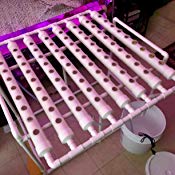
There are many hydroponic system units out there on Amazon and other online shops. These units are relatively inexpensive, and you can set them yourself.
An average of 72 spots hydroponic system unit will cost around 120.00$ on Amazon. This unit occupies about 4 square feet. A 500 square feet greenhouse will need approximately 93 units( with proper spacing taken into perspective). That will cost around 11,160$.
Appliances
Several appliances are needed for your hydroponic farm to maximize production and profitability.
Growing lights are one of them. On average, any hydroponic plant will need to grow lights with 32 watts per square foot. To cover your greenhouse growing areas, you will need around 11 LED full spectrum grow light units. Each unit is 1200 watts.
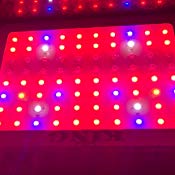
Another essential appliance is air pumps. A general rule of thumb, you should have an air pump that has 1 watt for every gallon present in your system. The hydroponic system will run with 430 gallons of hydroponic solution; this means that your hydroponic farm will need a 430 watts air pump. It will cost around 325$.
Finally, the most critical appliance, especially in NFT systems is water pumps. You will need to fully recirculate the nutrient solution in your system every two hours; this means that your system will need a water pump with at least 215 GPH(gallon per hour). You can find several choices on Amazon for as low as 30.00$.
Operating Expenses
Another essential aspect for any business to become profitable is reaching the break-even point. The break-even point means that when a business sells a product, the sales number is high enough to cover all of the operating expenses. After reaching the break-even point, every dollar above this point will become a profit that your hydroponic farm makes.
At this point, you have probably got it. You need to decrease your operating expenses as much as possible to be able to establish a profitable hydroponic farm.

So, now let’s take a look at the monthly operating expenses that a regular hydroponic business can have.
Electricity Bills
The main difference between hydroponic farms and traditional farms that use soil is electricity. Hydroponic farms use much more power than any soil farm.
The high electricity consumption is caused by the more controlled environment that hydroponics need. I want you to walk into a hydroponic grow room and tell me what would you see. You will probably find, high wattage, LED grow lights that run for at least 12 hours a day.
Also, you will find an air pump that helps keep the plant roots oxygenated 24/7. Not to mention the water pumps that will keep the nutrient solution circulating through the system. All of these appliances will cost a lot in electricity bills every month.
To find out how to decrease your monthly electricity costs while maintaining the same productivity, check out this post that I wrote.
Below is an estimate of electricity consumption per month
Grow Lights
| 11 Grow Light Units X 1200 watts each = 13200 watts/hour | |
| 13200 watts/hour X 16 hours/day = 211200 watts/day | |
| 211200 watts/day /1000 = 211.2 kilowatts/day | |
| 211.2 kilowatts/day X 30 days = 6336 kilowatts/month | |
| 6336 kilowatts/month X 0.12$ = 760$/month |
Air pump
| 1 Air pump unit = 430 watts/hour |
| 430 watts/hour X 24 hours = 10320 watts/day |
| 10320 watts/day /1000 = 10.32 kilowatts/day |
| 10.32 kilowatts/day X 30 days = 310 kilowatts/month |
| 310 kilowatts/month X 0.12$ = 37$/month |
Water Pump
| 1 water pump unit = 25 watts/hour |
| 25 watt/hour X 24 hours = 600 watts/day |
| 600 watts/day /1000 = 0.6 kilowatts/day |
| 0.6kilowatts/day X 30days = 18 kilowatts/month |
| 18 kilowatts/month X 0.12$ = 2.16$/month |
The above calculations will bring the monthly electricity costs to 800$ every month.
Water Utility Bills
Water bills are not so expensive, especially when you are using hydroponics instead of soil because hydroponics use up to 90% less water than soil.
But still, you will notice an increase in your monthly water bills, especially when you are setting your hydroponic farm at home or backyard.
Hydroponic Nutrients And Seeds
These items are relatively cheap when compared to what you have paid for electricity bills. They will not cost you more than 300$ every month.
I suggest that you buy them online as there will always be a cheap alternative available every time.
Most Profitable Crops To Grow
Choosing the crops that have the highest sales value is crucial for your hydroponic venture. The higher the sales price, the more profitable your farm will be. You have to remember that working smart is more important than working hard.
Let’s say you have a 1000 spot hydroponic system. If you choose to grow lettuce, for example, you will get 350$ for every bach you grow. On the other hand, if you decided to grow broccoli, your bach will bring you 1090$.
That is a 200% increase in your revenue just from changing the type of crop you are growing.
Below are the most profitable crops that you can grow to reach profitability.
Broccoli
Broccoli is one of the most famous vegetables out there and is probably present in every grocery store. You can find it in whole bunches or crowns. Consumers use it for making salads and some even like to cut it into small pieces and add it to rice.

On average, broccoli will take up to 100 days to be mature enough for harvesting if the growing conditions are optimum. So, this means that you can grow up to growing cycles every year, including the regular maintenance and flushing periods.
According to the product price index, a broccoli brunch will sell for 1.09$, and a broccoli crown will sell for 0.73$. These are the farm prices, not retail.
Romaine Lettuce
Lettuce is probably the most famous hydroponic crop out there. This is due to the fact that it is so much easier to grow by newbies than other crops.
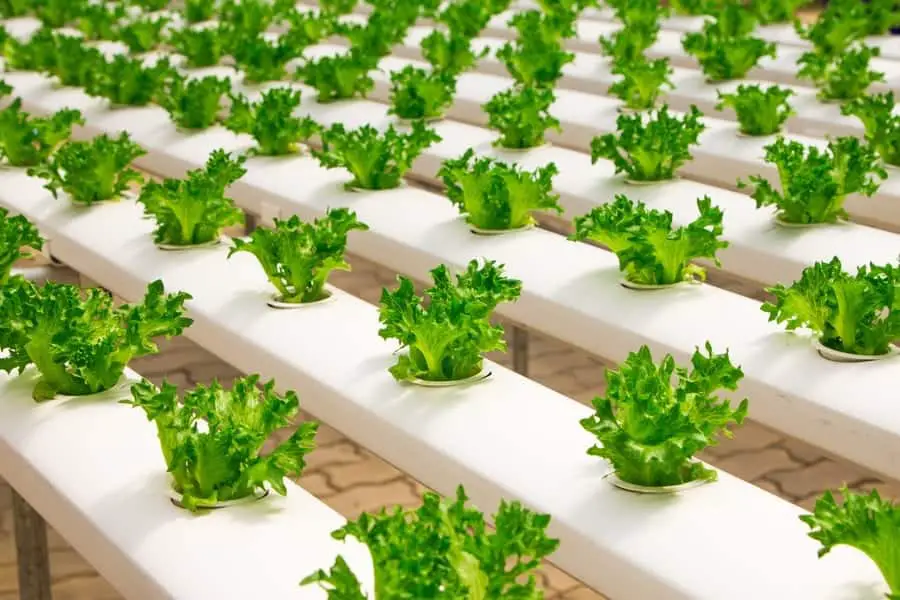
Lettuce requires a shorter growing period than broccoli does. It takes up to 45 days for a lettuce head to mature.
The average price for a head of Romaine Lettuce is 0.35$, which is cheaper than broccoli. But still, growers like lettuce because of its much easier growing process.
Mushrooms
Mushrooms can be one of the most lucrative crops if grown the right way. They have reached a whole price of 8$ per pound, which is insane. But don’t let numbers fool you, growing hydroponic mushrooms is a very complicated process. As a result, not too many growers are growing it despite its excellent sale price.
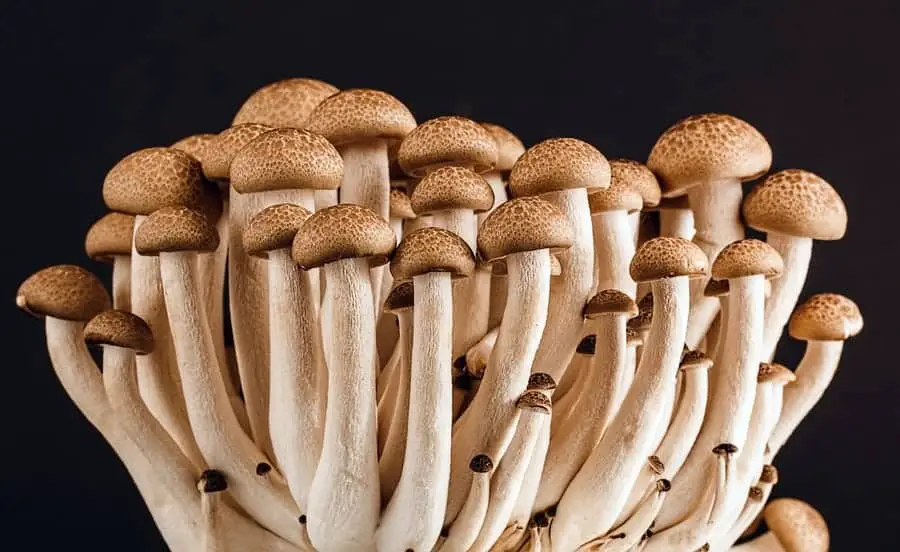
Strawberries
Another well-known hydroponic crop is strawberries. As a hydroponic grower, you can benefit a lot during the offseason period when there is almost no competition from other sellers.
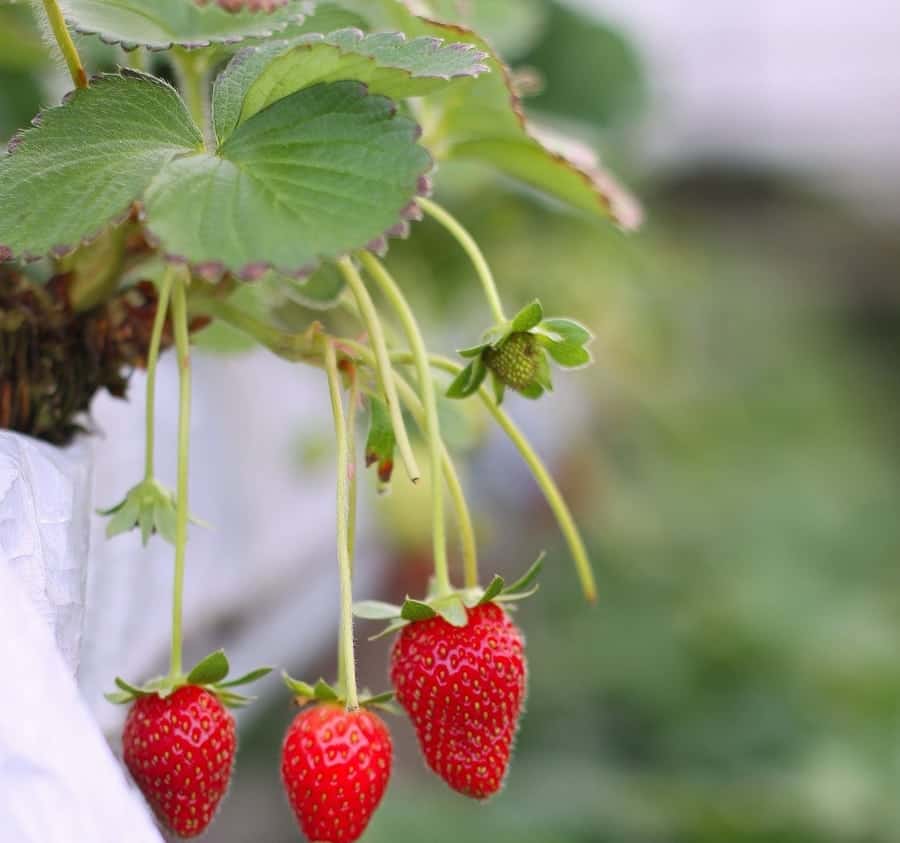
The average farm price of strawberries in summer is around 1.09$. The price increases significantly in winter due to the steep decrease in supply. It reaches as high as 3.25$ per pound.
Let’s Do The Math
Now comes doing the math part. We will assume that we are going to grow broccoli in our 500 square feet greenhouse.
The hydroponic system units that we are planning to get have 72 growing spots each. To fill up the 500 square feet greenhouse, we will need around 93 units. 93 units X 72 spots = 6696 growing spots.
Total Yearly Sales
| 6696 Broccoli Bunches X 1.09$ | 7,299$/growing cycle |
| 7299$/growing cycle X 3 growing cycles | 21,897$/year |
Total Yearly Expenses
| Grow lights: 760$/month X 12months | 9,120$/year |
| Air Pumps: 37$/month X 12months | 444$/year |
| Water Pumps: 2.60$/month X 12months | 31.2$/year |
| Hydroponic Nutrients and seeds; 200$/month X 12months | 2,400$/year |
| Total Yearly Expenses | 11,995$/year |
Total Yearly Profits
| Total Yearly Sales | 21,897$/year |
| Total Yearly Expenses | 11,995$/year |
| Total Yearly Profits | 9,900$/year |
How To Market Your Products
This is probably the step that most growers skip. They think that the technical side of the business, which is growing plants in hydroponics is the essential part of the process; this is entirely untrue. Any business owner needs to put effort into marketing their products as well as any other technical aspect of their business.
Using the right marketing channel for your crops can guarantee your business early profitability. There are many different marketing channels out there that you can use to market your business.
Offline Marketing
You can establish a strong offline presence in your local area. Some businesses hand out flyers in front of home doors. Others spread their flyers through the mailboxes of the entire neighborhood.
Local events like trade shows can be a massive opportunity for you to reach a large number of your locally targeted audience. Moreover, establishing a connection between you and your local grocery store next to you can be a smart move too.
Online Marketing
If you ask me what would I have chosen as a marketing channel, it will be marketing online. Having online marketing as the main marketing channel will be better for your business because as time passes, you build your online brand.

You can quickly start by running Facebook ads that target people near your farm in the geolocation.
By building your online presence, you can sell directly to consumers, which will result in a boost in profits. A Romaine Lettuce Head will sell for 0.35$ on the farm. On the other hand, its retail price is 1.99$; this is an almost 470% increase in the price from just selling directly to your customers.
Networking
The option that most growers like to choose is building their network with restaurants. Some fancy restaurants and hotels need better quality ingredients to cook their food with. Hydroponic crops tend to have healthier and tastier properties than traditional soil crops.

In my opinion, this is the best option for growers that grow a large number of crops per growing cycle. Despite selling the vegetables for the low farm price, you will have a constant demand from these restaurants to get your crops.
Real-Life Cases
The following startups are examples of how hydroponics can be a profitable business. Even though there are no available records of these startups being profitable, investors have invested in them heavily during the past five years.
In their opinion, they are doubling down on how hydroponics can change the future. These startups have chosen to invest their current profits into R&D (Research and Development) and expansion to gain more market share in the future.
Square Roots Urban Growers
This is a startup that was founded by Kimbal Musk. Yes, you guessed it right, Kimbal is the younger brother of the very famous Elon Musk, the founder and CEO of Tesla Inc.
Square Roots focus main focus is on indoor vertical farming. They use vertical hydroponic systems in containers to grow various types of crops like basil, mint, and chives.
The startup has received 5.4$ million dollars in funding so far. They have announced a partnership made with Gordon Foods, a 13 billion dollar company that is in the food distribution sector and own over 175 location across the USA.
Letcetra Agritch
Letcetra is a startup that was founded in 2016 in Mapusa, India. It uses Nutrient Film Technique and Deep Water Culture systems to grow crops like bell peppers, lettuce, and tomatoes.
Their indoor vertical farm is 150 square meters and produces over two tons of produce per year.
SPREAD
This is a high-tech company that is present in Tokyo.
There are developing challenges right now in Japan regarding the increased population and how to provide enough food for them. SPREAD is trying to solve this problem by building vertical hydroponic farms that can produce more than traditional farms do.
They are planning to invest heavily in robotics and artificial intelligence to increase their current production rate of 21,000 heads of lettuce/day to 30,000 heads of lettuce/day.
Related Questions
Are vertical farms profitable? Yes, vertical farms are very profitable for their growers. Despite its initial high cost, it can produce a higher yield that is enough to cover the operating expenses and generate profits
What is the most profitable hydroponic crop to grow? Mushrooms are by far the most profitable crops that can be grown hydroponically. Mushrooms have a whole price of 8$ per pound, which is hugely profitable.

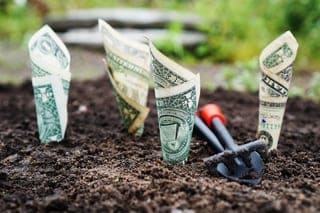

Hi Joe,
Thanks for the great info. I built an outdoor hydro facility in Florida years ago, and I agree that marketing is most people’s weak spot. I have an affiliate program, our company used to be Tall Trees LED but is becoming Curtis Mathes Grow Lights. Please see my name and email address in the log, and drop me a line if we can give you some money! (I wanted to have “Take Our Money Please!” be on our landing page, but alas, I was over ruled.)
Cheers,
Kevin